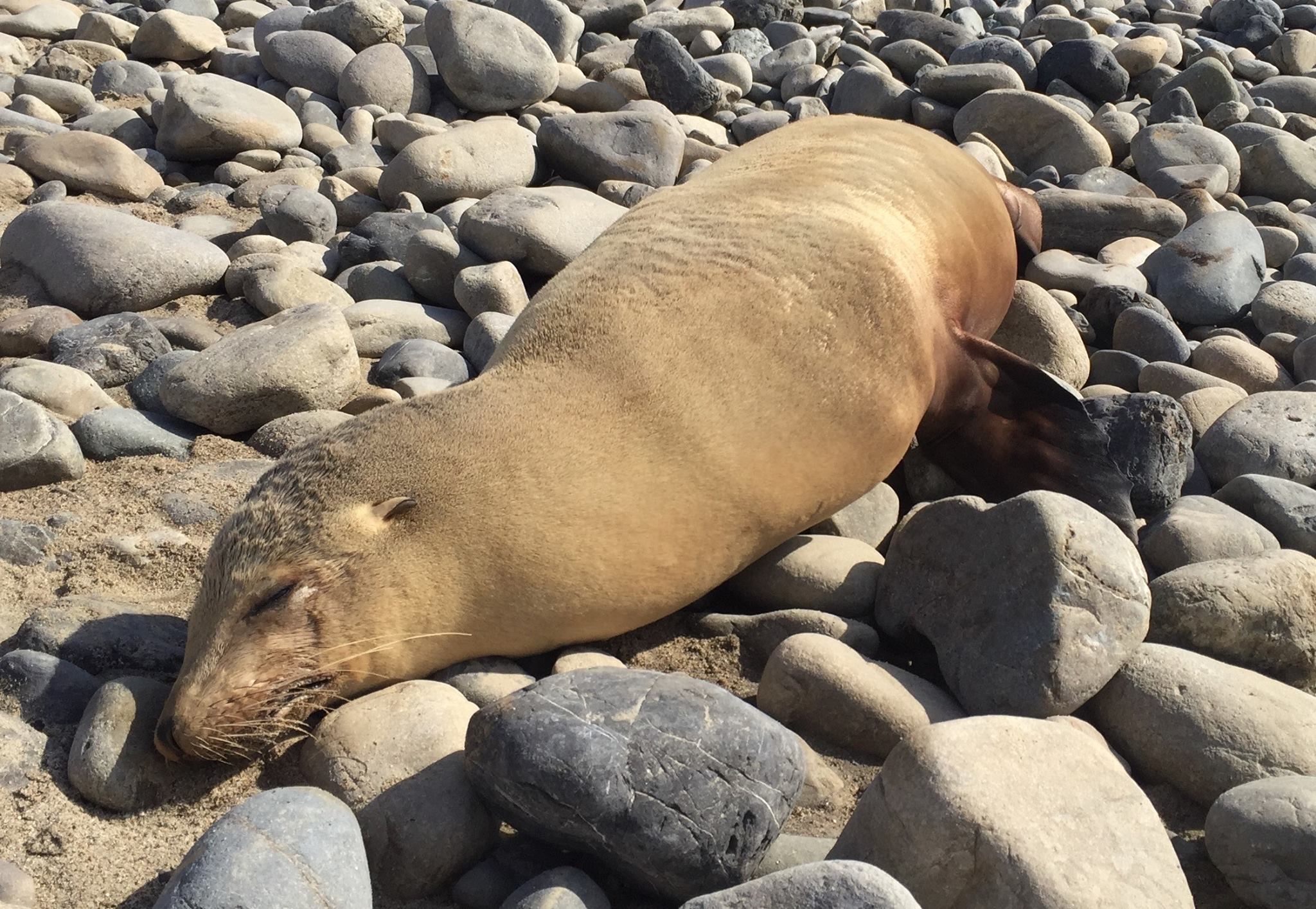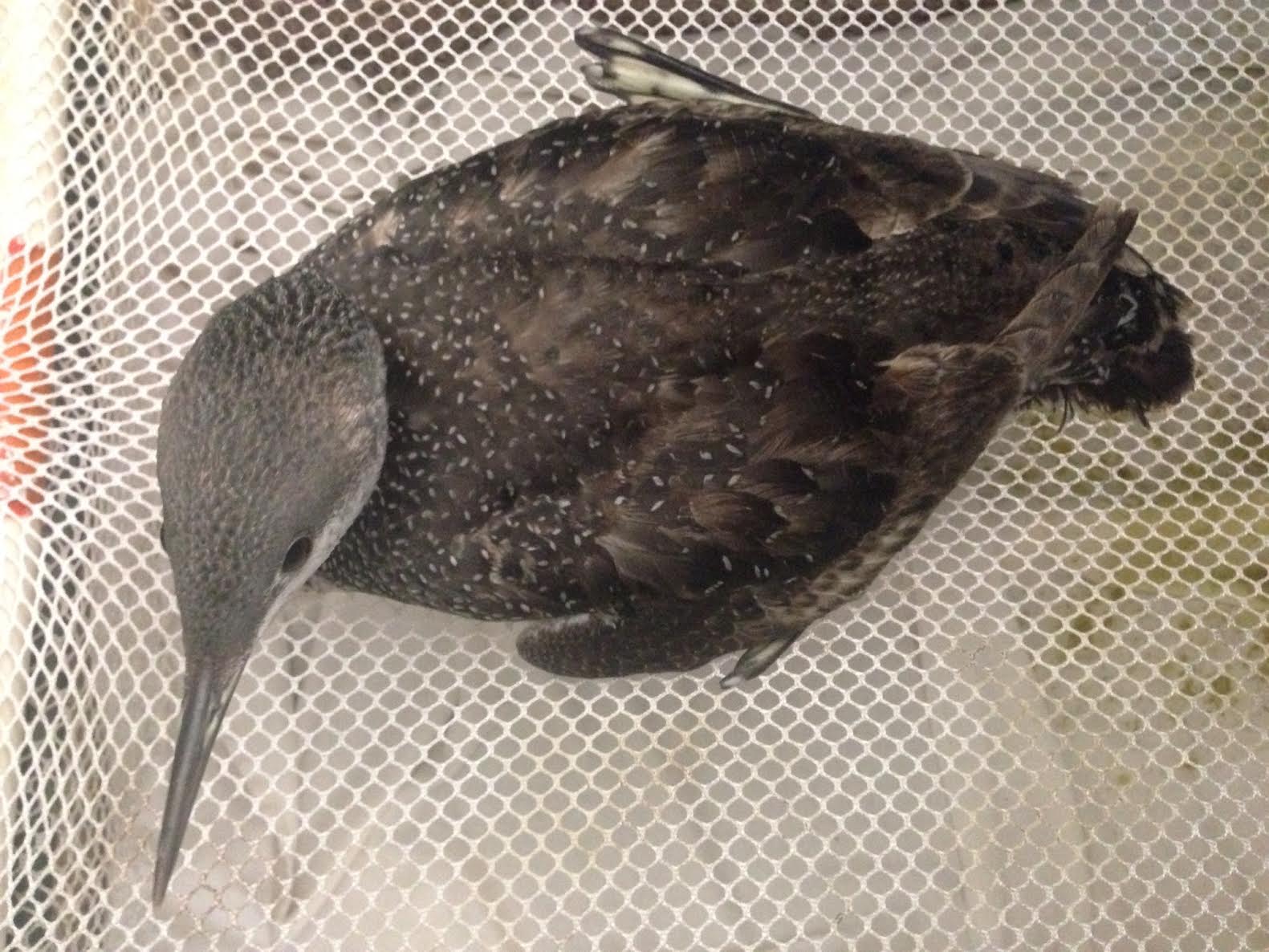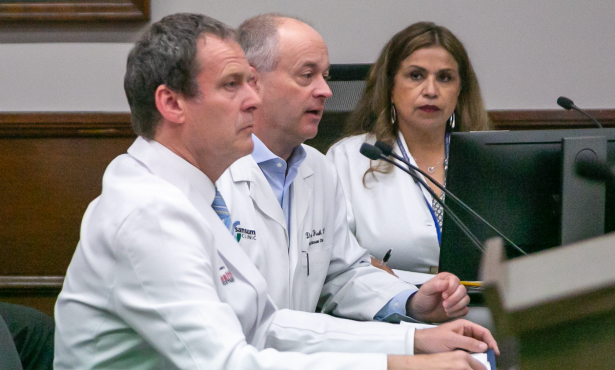Scores of Birds, Sea Lions Suffering Likely Domoic Acid Poisoning
Santa Barbara Wildlife Care Network Inundated with 216 Sick Birds in April Alone

Since the beginning of April, Julia Parker has seen 216 sick pelagic birds come into the Santa Barbara Wildlife Care Network. There were only four in February, and three in March. Of those 216, mostly loons, grebes, and murres, only 65 survived long enough to be transferred to the International Bird Rescue center in San Pedro. Many more have been found dead on nearby beaches.
Pelagic birds live their lives on the ocean. “They only beach themselves if there’s something wrong: if there’s tar on them, or they’re emaciated and starving,” explained Parker, the network’s Director of Animal Affairs. A large number of the birds found in April displayed neurological symptoms, including confusion, lethargy, and decreased response to stimuli.
It’s not just birds. The Channel Islands Marine and Wildlife Institute, or CIMWI, rehabilitates marine mammals found along the 153 miles of coastline edging Santa Barbara and Ventura counties. Every year, they find a few sea lions with similar symptoms: confusion, seizures, head-weaving, and foaming at the mouth. Then, on April 21, “we started getting inundated with calls — 100 calls per day” reporting sea lions stranded on the beaches, said Sam Dover, a veterinarian who runs CIMWI with his wife, Ruth. In the last two weeks, they’ve also seen six beached dolphins, all dead or dying by the time help arrived.
Rescue agencies, research laboratories, and wildlife centers are still compiling data and performing necropsies, but there’s a likely culprit for many of the mortalities: domoic acid, a toxin produced by algae that bloom in the waters off the West Coast, called Pseudo-nitzschia. Dave Caron, a professor of Biological Sciences at USC, runs a laboratory that studies harmful algal blooms. His lab recently analyzed samples from 32 sick sea lions, all of which tested positive for domoic acid toxicity. He’s also had a positive test from a brown pelican brought to International Bird Rescue. Among sea lions, pregnant females are most likely to be affected, and many are prematurely giving birth in Southern California marine centers to pups too young to survive.

The problem isn’t isolated to the Santa Barbara area, although we appear to be currently seeing the worst of it. “The reports that I’m hearing are from Santa Barbara, Ventura, Los Angeles, and Orange counties — nothing north of Point Conception,” said Lena Chang, a biologist with the U.S. Fish and Wildlife Service. But Pseudo-nitzschia tends to work its way up the coast, as the weather changes and Southern California waters grow too warm for healthy blooms. It’s likely that animal populations further north could be affected in the coming weeks. Raphael Kudela, a professor of Ocean Sciences at UC Santa Cruz who studies the growth and distribution of phytoplankton, tests domoic acid levels in the Monterey Bay. The newest samples, reported Friday, had jumped up by a factor of ten from the previous week.
Pseudo-nitzschia doesn’t automatically produce domoic acid. Kudela explained that healthy blooms of the algae often aren’t toxic. Pseudo-nitzschia blooms best in water that is warm but high in the nutrients brought to the surface by upwelling — cold, deep water rising up to the surface. While researchers don’t understand all the factors involved, evidence suggests that if the blooms are stressed — by conditions like excess carbon dioxide, too much copper, or not enough iron — they will begin to produce toxins. Some researchers think that climate change-caused ocean warming and acidification could be contributing to the problem.
Alfred Hitchcock’s thriller The Birds was reportedly inspired by a story reported by the Santa Cruz Sentinel on August 18, 1961. Thousands of seabirds had swarmed coastline communities near the north end of Monterey Bay, crashing into buildings and falling onto the streets. (They appear not to have actually attacked people.) Fifty years later, a group of researchers, led by Sibel Bargu of Louisiana State University, analyzed archived zooplankton samples and diagnosed the birds with domoic acid toxicity.
In 2015, a massive domoic acid outbreak spread from San Pedro to Alaska, “the biggest toxic bloom and the highest concentration that has ever been documented,” Kudela said. The toxin contaminated fisheries and poisoned large numbers of marine animals, including seabirds, sea lions, and whales. Corinne Gibble, an environmental scientist for the California Department of Fish and Wildlife who runs the state’s Seabird Program, says that that this year’s outbreak, while significant, isn’t as bad as 2015’s infamous event.
Domoic acid toxin levels wax and wane: “There’s no typical year; it’s sporadic, episodic,” said Caron. His lab’s recent samples show seven to eight parts per billion in coastal waters. That’s certainly high, and consistent with a toxic event, but the highest concentrations, like those found in the 2015 algal bloom, tend to be between 25 and 50 parts per billion. Caron cautioned that domoic acid levels are hard to test accurately: “This stuff is patchy,” he explained. “We’re sampling a very small part of the coastal ocean, but there’s a big ocean out there.” For that reason, the high levels of marine-mammal illnesses are significant. “Marine mammals are a sentinel species that can indicate whether you’re having a tiny patch or a widespread bloom,” Caron says. “Somewhere out there, there’s quite a bit of toxin.”
There are repercussions for humans as well. A statement issued on April 13 from the California Department of Public Health warned people not to eat bivalve shellfish (like mussels, clams, and whole scallops) recreationally harvested in Santa Barbara County.
For the animals, a limited amount can be done. Much of the care that a wildlife center can provide is supportive — flushing toxins with subcutaneous fluid, providing food that a sick animal won’t necessarily eat. Rebecca Duerr, a veterinarian who is a research director at International Bird Rescue, also treats seabirds’ neurological symptoms with medication and says that the vast majority recover, but that of the 160 birds she estimates have entered nearby wildlife centers, only 60 lived long enough to be transferred to her facility. “I presume we are currently getting the less affected birds,” she says.
Dover thinks that being transported to an unfamiliar place can cause sea lions undue stress and threaten recovery. For an otherwise healthy sea lion with relatively low exposure to domoic acid, the best chance for survival is being allowed to recuperate in familiar surroundings, he explained. “We put a stake on the beach, tell people what’s going on, put a barrier around the animal,” and monitor it for the next few days, he said. A sicker animal will be taken to CIMWI, but “for a heavy dose, it’s pretty much a death sentence anyway,” Dover said. Domoic acid poisoning causes hippocampal atrophy, a permanent shrinking of the part of the brain that contains an animal’s “mental map” of the right places to go for food, breeding, and shelter.
“At this point, the best thing we can do is try to understand the conditions that lead to these blooms, so we can predict them and have a response ready,” said Caron. Kudela, with a team of scientists working out of UCSC, is doing just that. His lab has developed a “habitat model” that forecasts regions where high domoic acid levels will appear. The model is a boon for marine animal rehabilitators. “It’s helping them guide their decisions, adjust workforce numbers, and anticipate large numbers of animals coming to centers,” he said.
The model also offers the potential for intervention and management in the future. Point-source pollution is more straightforward. Kudula explained that nutrient-rich runoff from agriculture and septic systems helps some types of algal blooms to develop. “We want to reduce runoff anyway,” he explained, “but now it’s an obvious strategy.” His team has discussed more systematic kinds of intervention, like trying to manage water temperatures over time. But the simplest solution could be greater environmental awareness overall: “If we [as a culture] were serious about mitigating climate change, we’d probably reduce some of these events as well.”



